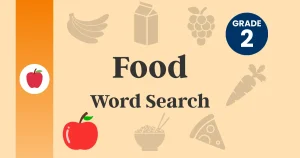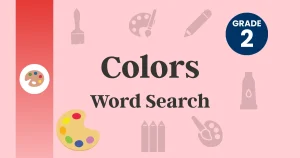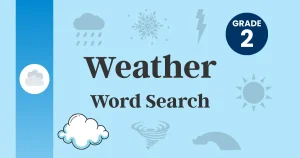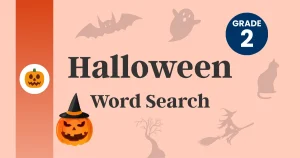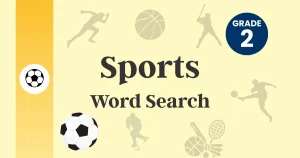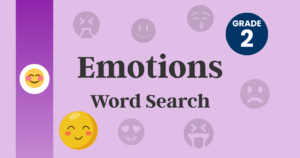🔷 Overview
Shapes are all around us — in buildings, toys, art, and even in nature. This Grade 2 Shapes Word Search introduces fifteen important 2D and 3D shapes. By solving the puzzle, learners strengthen spelling skills while building math vocabulary that supports geometry lessons and everyday observation.
🎮 How to Play
- Review the list of fifteen shape words.
- Search the puzzle grid carefully; words may appear horizontally or vertically.
- Circle or highlight each word when you find it.
- After solving, look around your classroom or home to spot real-life examples of the shapes.
- Use the printable answer key to check your work.
🎯 Learning Goals / Skills
- Practice English spelling of 2D and 3D shape vocabulary.
- Connect math (geometry) with language learning.
- Strengthen observation skills by finding shapes in the real world.
- Support STEAM education by linking shapes with art, design, and science.
📖 Word List + Mini-Glossary
- CIRCLE — a round shape with no corners; seen in coins and wheels.
- SQUARE — four equal sides; used in tiles and checkerboards.
- TRIANGLE — three sides; common in signs and roofs.
- RECTANGLE — four sides, with opposite sides equal; seen in doors and books.
- OVAL — a stretched circle, like an egg.
- STAR — a shape with points, used in art and symbols.
- HEART — a symbol of love, often in cards and decorations.
- DIAMOND — a four-sided tilted square, used in kites and playing cards.
- CUBE — a 3D square with six equal faces, like dice.
- CONE — a 3D shape with a circular base and a point, like an ice cream cone.
- CYLINDER — a solid with two circles and straight sides, like a can.
- SPHERE — a round 3D ball shape, like the Earth or a basketball.
- PYRAMID — a solid with a polygon base and triangular sides, like the pyramids of Egypt.
- PRISM — a 3D shape with two matching bases, often used in science experiments with light.
- HEXAGON — a six-sided polygon, seen in honeycombs.
👩🏫 Teacher Tips
- Math Link: Use the puzzle to review 2D vs. 3D shapes.
- Observation Task: Ask students to list objects in the classroom that match each shape.
- Art Connection: Encourage children to create a drawing using at least five of the shapes.
- STEM Extension: Show how prisms and pyramids are used in architecture and science.
🖨 Printable & Answer Key Notes
This puzzle blends basic shapes (circle, square) with more advanced terms (cylinder, prism, hexagon), making it suitable for Grade 2 learners. The “Print Blank” worksheet is useful for geometry warm-ups, while the “Print with Answers” version helps teachers and parents confirm results quickly.
